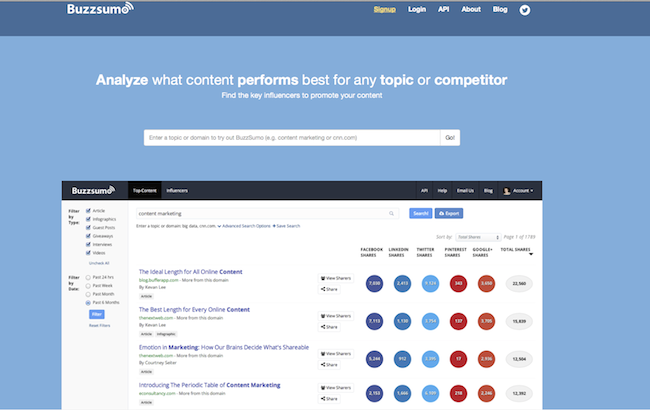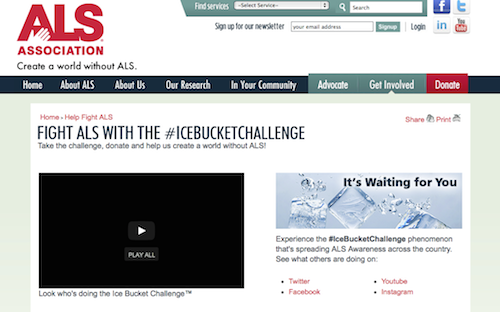I’m sure just about everyone these days is on some form of social media platform; Facebook, YouTube, Twitter, LinkedIn, Google Plus, Instagram…the list does go on and on. Rest assured that you’ll always find interesting content to read or watch on one of these sites. Even if the material takes you to a link on a different website, it’s still worth it to go and take a look…but that’s only if the link is going to show you content that’s interesting to you, right? Right!
And if it is something that really grabs your attention, it’s got to be very, VERY good to make you want to share it out in the social media space, right? Right!!
Well, your blog readers are no different. They only read and share the interesting stuff too, just like you. That’s why your material needs to stand out, needs to be different. But the thing is, there is so much *stuff* out there ’til readers can become easily distracted. How do you get and keep their attention?
Sharing the Good Stuff
Yes, there’s a lot of content material out here on the web, and all of it’s not necessarily good or shareable. Admittedly, we all want to produce that content that’s “shareable” because really, that’s what it’s all about. Web content has to fit a reader’s preference, style and need. Therefore, it stands to reason that content that’s ultimately shared and re-shared via social media channels has got to be pretty special. It just has to be. That social media content has to:
- Capture the reader’s attention
- Keep the reader’s attention
- Be interesting enough for the reader to stay until the end, and
- Make the reader want to share it with others within their social spaces, i.e., more eyes on the content.
However, in an ideal internet world, that scenario would be great, but in actuality, there are many different website publishers vying for the reader’s attention. This alone makes it imperative for us to write and publish material that’s not just excellent, but material that makes a connection with the reader and leaves an impression.
Why do readers choose to share your content? What makes some content go viral and other content crashes and burns? Is it the author’s personality? Is it the quality of the video? Does it matter when it was published or where it was written? Does it depend on the topic? Let’s look at some key things that you can do to make your content stand out and get readers to tell others about it.
Know What Works
Ask five different website owners which social media space they prefer for content sharing, and you’re probably going to get as many different answers. A lot of navigating around the social media spaces and making efforts to share your content has a lot to do with simply knowing what works. You have to know what sharing sites work for your content idea and where you need to place your content to make it clickable. You’re likely to always hear the social sites Facebook, LinkedIn, Twitter or Google + named as the heavyweights in social media platforms. However, there are substantially many more social sites than these that can yield significant results. It all depends on what works for the content that’s being shared.
Know How it Works
Most all of the major social media platforms work pretty good on their own, meaning, there’s not a whole lot to do to try and get people to the platform. They’re already there. They’re already reading stuff. But simply adding your currently published post(s) to your Twitter timeline may not bring any of those readers to your material. Actually, you may be disappointed to see that no one “liked” it, retweeted it or did anything with the content.
No, every piece you write won’t go viral, but when you’ve really put in a lot of work, time and research into creating some really great content, it can be a big let down…if no one reads it. Or shares it. Or watches it. Or talks about it. Or does anything with it. Social media platforms work ideally with a little help from specialized social media tools, which just simply help them to work better for you. These tools help your content by giving you statistical trends, information, habits and details about your audience.
Your goal is to create the best possible content for the audience who wants, needs and is looking for what you have to offer.
This huge list of social media tools can make the content navigation and creation experience so much easier. Each of these tools completes a different task and goal according to your preferences. Of course, you certainly can’t, and shouldn’t, use each and every one of these tools for your site’s content sharing activity. That’s just not reasonable nor is it an efficient way to maximize your work. Each piece of content that you create is different, therefore it’s understandable that reaching your target audience will require something different.
For instance, let’s take a look at Buzz Sumo, a social media analytical tool. This tool allows you to track what and where popular content can be found on a given topic. It tracks content material on the major social media platforms like Facebook, LinkedIn and Twitter and returns a search that shows you what’s currently trending.

The Buzz Sumo tool can be a major player in helping you to curate content that readers want to see, read and are already reading. This eliminates wondering what to publish, or if to publish; this tool gives you highly relevant information.
Know How to Work It
It’s not enough these days to be clever or witty in your posts. While that does help, but you have to really work to capture your reader’s attention. Once you have it, you can’t let it go until you’ve done a few things:
1. Start with a Purpose
Have an end-goal in mind before you begin writing. Never just toss out any content before you consider what it is that you want the content to do. Is it to inform? To entertain? To spark an emotion or a call to action? Content without a purpose will simply sink, ending up dead in the internet waters. Your purpose will also help you draft a more compelling piece. For instance, if your content material for a short post is only going to be as information to your readers, then it might not be necessary to upload interviews or provide links to three or more referral sources. Don’t wait until you’ve started working on the material to decide its purpose.
2. Consider Your Audience
All social media platforms require different approaches. This is why it’s not “that easy” to crank out content and just paste it up on any old platform. Facebook, Twitter, LinkedIn all require different approaches. Learn where your audience is, learn what they like or prefer and deliver your content to them in that fashion. Don’t expect the members on LinkedIn to be that impressed with your dog training videos of you in the back yard. That platform is more attuned to business professionals who are looking to connect with other business people. They’re looking to provide answers and find solutions to common business issues. Likewise, don’t expect that your pie chart on business economic trends will do well on a platform like Pinterest. But, it may get several shares, likes and retweets with the other platforms. You have to consider your audience and cull your material for that group. Once you do that, you’ll find that it’s easier to create good material that’s readily shared.
3. Connect With Your Audience
Readers click on your material, then they click away. It seems that they just don’t “get it” and they don’t seem to really appreciate all of the rich, wonderful content you’re giving them. They don’t share it, talk about it and sometimes they don’t even come back to your site! Readers sure can be a fickle bunch, can’t they? Really? Let’s be clear here: Our readers do not come to our sites just to make us happy. Our jobs as publishers is to make our readers (well, the majority) happy. Make them really enjoy reading your content. Engage their minds so that they’re fixated on your work. Make it interesting, valuable and relatable. Do all of this by creating a connection with your readers by talking to them and not at them. Include them in your content. Write your words as if you’re naturally speaking. Visualize your reader sitting across from you, and just connect. Keep things simple. Read your content as if you’re a first-time visitor. Tweak it so that it sounds welcoming. Explain something when you need to and stop when you don’t.
4. Be Genuine
This ties right in with connecting with your audience because they are the best judge of whether or not you’re really being genuine. And yes, it does show through your content. They can tell if you’re being yourself or if you’re simply blogging just to “get-‘er-done.” Readers know when you’re vying for likes. They know when you really know your material and when you really don’t. They can tell when you’re excited and passionate about your topic. Even when I started writing this article, I had to change my approach to some of the points I was making because it began to sound too “stiff” to me. I’m quite the “keep-it-simple” type of person and I noticed how some of my thoughts were morphing into these long, drawn-out academic-feeling ideas. I didn’t like it, and that isn’t me (unless of course I’m freelancing for that type of client!). But when I’m blogging, even professionally, it’s more important for me to stay true to who I am and genuine in my writing style.
5. Brevity is Key
No matter if your content is 30 words or 3000 words, the point is to get to the point. A lot of times people equate that to mean short, but it doesn’t. It simply means direct. Use as few words as possible to say what you need to say. Don’t sacrifice brevity for quality, however, using run-on sentences with long-winded, inflated words do nothing but encourage click-aways. Of course, you should always create content with your own personal publishing style, but don’t frustrate or annoy your reader and cause them angst by attempting to obtain and retain their utmost attention as you provide them with negligible facts or an assortment of informational pieces which in hopes will cause them to return quickly or possibly not at all to your website where they can eagerly look forward to more engaging material that spawns from your site. See, wasn’t that very annoying to read?
6. Content: Make it Right
It’s never fun to click on a headline and then not actually read what the headline promised. It’s one of the most frustrating things readers often encounter (much like those run-on sentences!). Yes, we should definitely write clickable headlines, but always, always, write those teaser headlines AND deliver the goods. I often refer to the content team at Copyblogger to get tips on how to write really good headlines and what should be included. Put your most important, attention-getting information out front in your article so that your reader is more likely to stay until the end. Choose content topics and material that’s exciting, making people want to read it, and then share it. Remember, each time you create a piece of content, you need to spend a good bit of time crafting a good headline. It needs to be something that makes the reader want to read it. That’s the goal. And to get them to share it.
7. Use Visuals
Things like infographics, images and videos are appealing to the eyes and invite sharing clicks. They also give your content that extra “push” to jump ahead in line. Always use examples and visuals where appropriate. It helps drive your point(s) across and leaves a mental bookmark in your reader’s minds. Creating visuals like infographics isn’t difficult to do, and depending on your area of expertise, are much more preferable than plain text content. I really liked this excerpt from a post on Julien Rio‘s blog about 5 Reasons to Use Infographics to Improve Information Retention:
#4. Because it’s viral: An image can easily be shared on Facebook, Twitter and other social networks. It is displayed in its entirety, contrary to a text that is redirected via a link. (post link)
Visuals are easily absorbed and are especially helpful in keeping the blog reader’s attention who has so many other options from which to choose. With instant access to computers, smart phones and tablets, information overload is always a risk.But by using visuals where possible, your content stands more chances to get noticed. Visuals also do a great job of creating a good buzz, those wonderful backlinks and great exposure. Let me share with you just how BIG this can get. Let’s look at one example of a viral piece of visual content that has been shared over and over in the social media space for some months now. I know you’ve heard about it (and may have even done it!). It’s the still-growing Ice Bucket Challenge. This now viral sensation was initially started to bring awareness to a nerve cell degenerative disease, encouraging people to donate to its research. Amyotrophic Lateral Sclerosis (ALS) participants are “challenged” via social media to dump a bucket of ice water over their heads and/or donate money to the foundation.

To date (August 2014), the foundation has raised over $40 million dollars and is still going strong. There have been numerous celebrities, politicians, college kids, etc. who have gotten involved with the challenge, making the buzz about it even more exciting and enticing. Yes, that’s content sharing at its finest!
8. Pay It Forward
Much of what makes content shareable on the web is the feeling of being connected to others who think similarly to you. Whenever I read good content, I generally share it and then maybe even tag a writer peer who I think could also appreciate it. When you can, and where you should, always include links in your content. Even if your “content” is an image or video, include the link from its original destination. This will do a few things:
- Lets the original author know that you are linking to their content because you find it to be valuable.
- Makes your own content “clickable” because the author will most likely want to know more about you and how or why their content was so valuable to you.
- It imbibes a connective good will across the web, essentially forming it’s own “community.”
9. Make A (Sharing) Call to Action

Include share buttons at the end of your article(s) and just ask the readers to share it. Sometimes, it’s just as simple as that. Pose a question at the end of the article that will spark conversations from your readers. Maybe even get a little controversial to keep things lively! Invite comments from your readers, which is in essence an activity that encourages content sharing. But more importantly, respond to those comments because doing that will help your blog readership grow and reach others. This lets your audience knows you’re being genuine (remember that?) and that you’re actually engaged with your own material.
10. Post Frequently
Frequent posts make sure your content gets seen. It also increases the chances that it will get shared. Because once readers see your quality content appearing on a regular basis, they’ll start looking forward to it. Regular blog readers expect a certain level of quality and consistency from you after they’ve seen your work. Don’t disappoint them by not delivering. Our content shared via social media platforms is a lovely thing to be desired. It’s what we all work hard for and try to do with each piece of material we produce. It’s not a hard thing to do, but it does take knowing what to write about so that our readers are interested, knowing what social media platform to publish it on to make it shareable and how to organize the content material in a such a way that gets eyes on the page and clicks from the readers.
Write good, valuable, well-constructed material. Make sure your valuable creation is targeted to fit your audience. Interact with your readers. Keep things simple but valuable. Now, go on and create your next awesome piece of clickable, sharable content that’s going to impress and excite your readers.
Are you ready?

